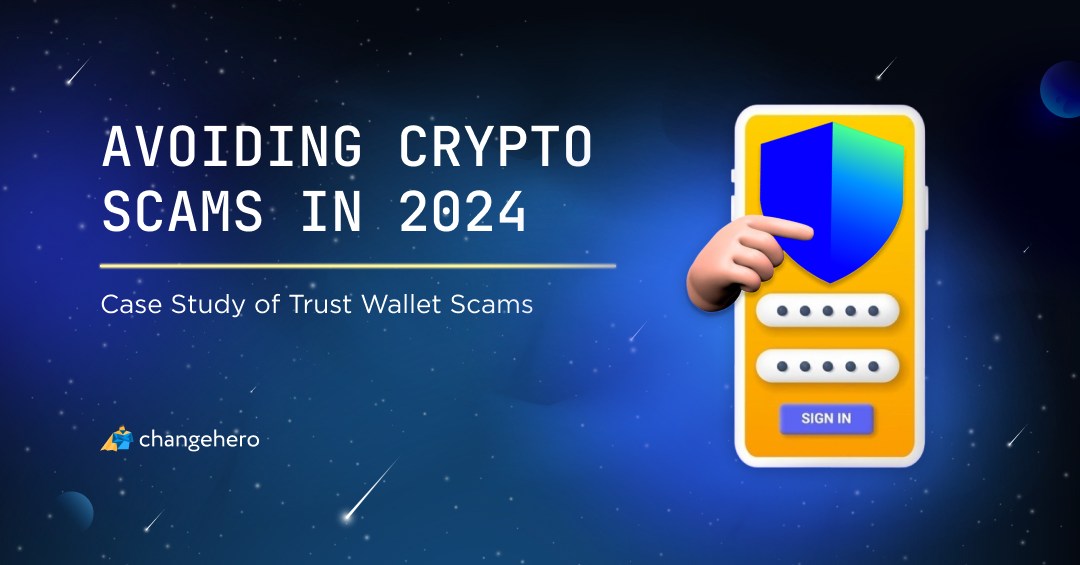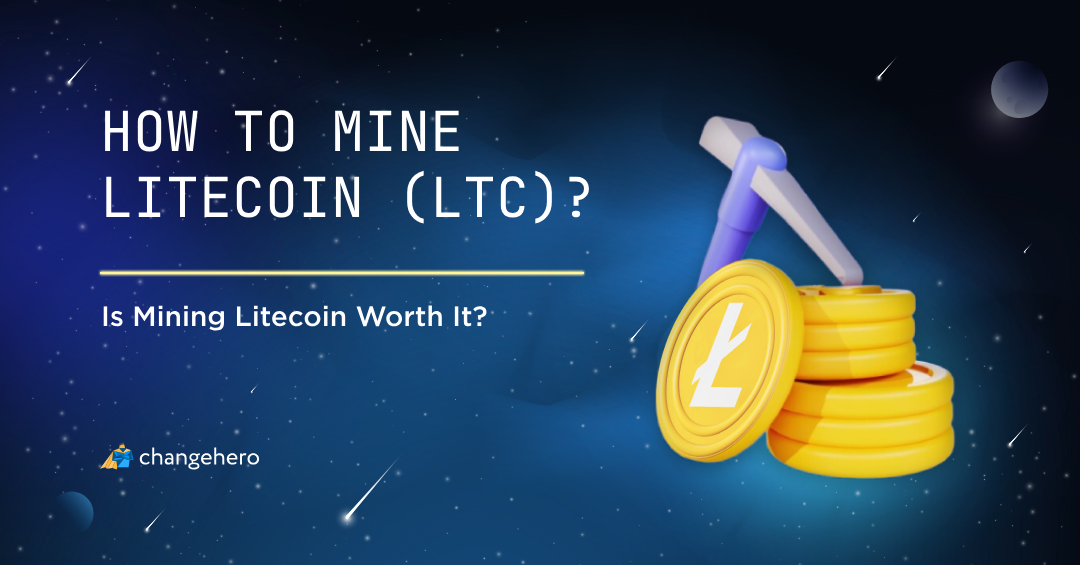Compound is one of the better-known names out there when it comes to DeFi, despite being around for a bit more than a year. The buzz that is growing into a rumble is connected with the new Compound token, which popularized the so-called ‘liquidity mining’. Let’s try to look under the hood of the Compound protocol and COMP token to see why it is booming in DeFi and what does ‘yield farming’ that is the new hot topic even mean.
What is the Compound protocol?
Compound protocol emerged to fill the niche that was not yet developed even by the existing DeFi projects — frictionless borrowing of crypto assets that lets its users gain the time value from assets. The time value of money is a concept that lies at the core of interest earning models.
The Compound protocol is designed to be able to algorithmically calculate interest rates for each asset in accordance with the supply and demand, which was possible in traditional finance. Before Compound, the decentralized borrowing models were already in place but forced costs onto users because lenders were required to post, manage and in the case of collateralized loans supervise offers and active loans.
On a basic level, markets on Compound incentivize liquidity: the more an asset is loaned, the higher is the interest rate (although the formula in the whitepaper is a bit more nuanced). Users can either supply tokens into the protocol or borrow/sell/use/re-lend assets if they put some of their balance as collateral. At the moment, there are 9 markets (one — SAI — is under liquidation): users can supply ETH, 0x, Augur, WBTC, BAT, USDT, DAI, USDC in return for a corresponding cToken (cETH, cZRX etc.) which accrues interest.
How did Compound and COMP start?
Robert Leshner and Geoff Hayes founded Compound in 2017 with a group of developers: Art Peel, Torey Atccity, Mason Fischer, and Calvin Liu. The announcement of protocol development was made by Robert Leshner on his Medium on January 31, 2018. The Compound Version 1.0 whitepaper was published in February 2019 by the founders. Among the investors that helped the protocol to be launched are Andreessen Horowitz, BainCapital Ventures, as well as the industry giants such as Coinbase and Polychain Capital.
It did not take the founding team too long to make advancements in the Compound protocol. Migration to v.2 happened in May, 2019. It is the current version that at launch supported Ether and Ethereum assets, such as 0x, Augur, Basic Attention Token, Dai, and USDC. By that time, the protocol already held about $24 million.

At the initial stages, though, it received a lot of criticism for being governed by the founding company, so it was about time to take the next step and introduce the community-based governance model. On May, 27, Leshner made the announcement that the company delegates all the future decisions about the changes to be made to the protocol to its community. This is where the COMP token comes into play. On June, 11, the Proposal 7 which signified the start of Compound token distribution was published for voting. It was unanimously approved two days later, and on June, 15 the model was put in place.
How does Compound work?
Compound markets allow everyone to lend and borrow assets at an interest rate which is applied to everyone uniformly and adjusts algorithmically.
Lending Assets
The most attractive point in Compound for investors and the mechanism that encourages them to provide liquidity to the Compound markets is earning interest on the supported Ethereum assets. In return the users get cTokens that correspond to the asset they deposited (cDAI, cETH etc.) which earn interest. If there is enough liquidity on a market, a corresponding cToken will not yield much, but contributing to a pool with low liquidity will let you earn more. cTokens can be redeemed for corresponding assets plus accumulated interest at any time.
Borrowing Assets
The assets deposited to the protocol in return for cTokens also act as a collateral to receive some borrowing capacity. The more demand there is for a certain asset, the more borrowing capacity its cToken gives. In a scenario when debt outpaces borrowing capacity, the collateral will be exchanged for an overborrowed asset at a rate unfavorable to the debtor to repay the debt and discourage poor debt management. Other users can act as liquidators of debt, and they get a chance to receive this collateral at a rate favorable to them.
Under the hood
The demand/supply ratio and prices of tokens are fetched by a Price Oracle from a committee which pools the data provided by top 10 exchanges.
In addition, there is a policy layer called Comptroller that validates the data from both the market and the user before allowing an action to proceed. For example, if a user wants to borrow ETH, the Comptroller will check if the ETH price provided by the Oracle is valid, and if they want to deposit ETH as a collateral, it will validate both price and a collateralFactor of cETH.
What is a COMP token?
Compound token (not to be confused with cTokens) is a relatively new kind of assets: governance tokens. The idea itself is not entirely new (take TRON or any DPoS network as an example) but Compound token is used exclusively in community governance. COMP token-holders can either debate, propose, and vote on all changes to the protocol themselves or delegate some of their voting power to other community members.
Compound tokens are distributed to users that interact with the markets, regardless of whether they borrow, lend, withdraw or repay an asset, in proportion to the borrowing demand in the market. So, right now a user will earn COMP faster if they interact with the DAI market rather than, say, 0x, because the demand to borrow DAI is higher. Daily distribution of the tokens is split between suppliers and borrowers in 50/50 ratio. COMP are accrued to a user’s wallet first, and then can be withdrawn from the account.
How much is a Compound token worth?
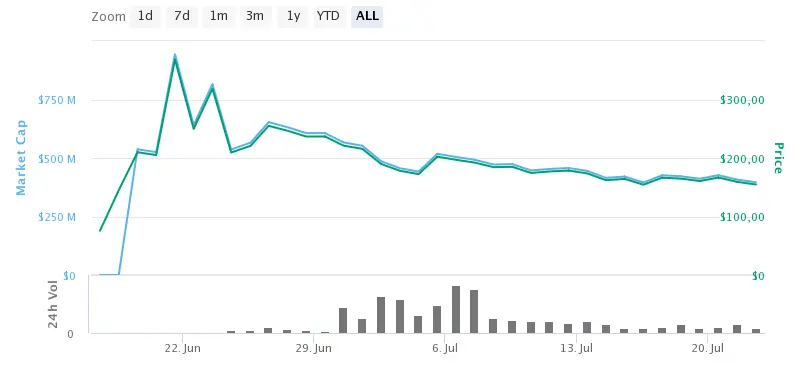
Compound started attributing COMP to users a little more than a month ago. It is already listed on the large exchanges, including Coinbase and Binance, and its price ATH (registered on June, 21), was $381.89. At the moment of writing, there are 2,561,279 COMP in circulation, and with the market cap of $395,994,856 one COMP costs $154.61. The distribution will continue until there are 10 million Compound tokens in circulation.
How to use Compound token?
The Compound token, first and foremost, represents the voting power in the Compound protocol. It is transferable and can be delegated.
The most common use for it now is, surprisingly, a quite new activity called ‘yield farming’ or, alternatively, ‘liquidity mining’. Since the interest rates in Compound depend on the supply/demand ratio, they are constantly changing, so to maximize profit, savvy market players move their assets between markets so that they catch the highest rate — this is yield farming. Liquidity mining comes into play when on top of that, a user gets additional assets, like COMP, the value of which is supposed to come from the value of the protocol. This is, however, only a temporary situation, because when the free money is distributed like this, the market price of the token is going to decrease, unless the community comes up with a way to give COMP a use case good enough to entice more investors to join, for example, incentivizing holding the token in the protocol as opposed to withdrawing it.
Are there any controversies around Compound?
Compound is a relatively new player on the market, so it does not have a long history of ups and downs. Generally, it is regarded as one of the more viable and legitimate projects out there, backed by its investors and partners.
That being said, the Compound protocol was no stranger to a liquidity mining frenzy, and its system got exploited: previously, riskier markets with less liquidity offered more rewards in COMP, which had recently hit an ATH. This has led to a crazy influx in low-liquidity markets and skewed the distribution rate so much, the community had to change the COMP distribution rules.
There was also a shortcoming in one of the apps that let users borrow DAI against the collateral of cDAI, which might have inflated the reported amount of DAI locked in the Compound protocol to be more than there are DAI tokens in existence. If true, that was a situation where the debt was way over the existing supply, which is risky to put it lightly.
At some point, before the existing governance model, the power Compound Labs held over the protocol was the source of some concerns. With the new governance model in place and COMP token distribution the system will gradually get more democratic and decentralized.
COMP on Twitter
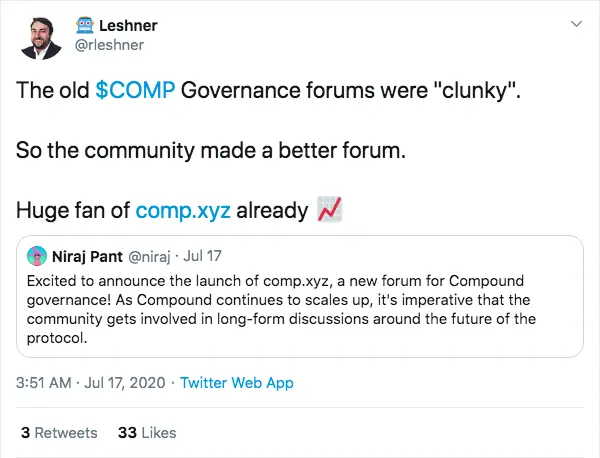
Robert Leshner, the Compound company spokesperson is on Twitter under the handle of @rleshner. Since now the company is in the contributor position, most of the developments and changes will be made by the community. They recently have launched a new forum, on which Leshner comments favorably.
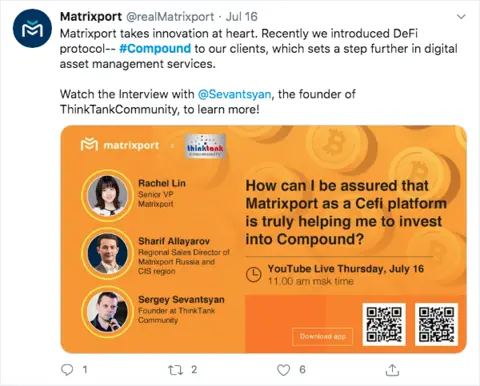
Matrixport is one of the partners of Compound in the growing list. They recently spoke about how Compound helps their customers gain more value from their product. Initiatives like this increase the protocol’s exposure, help attract new customers and partners and increase the level of trust to all the projects involved.
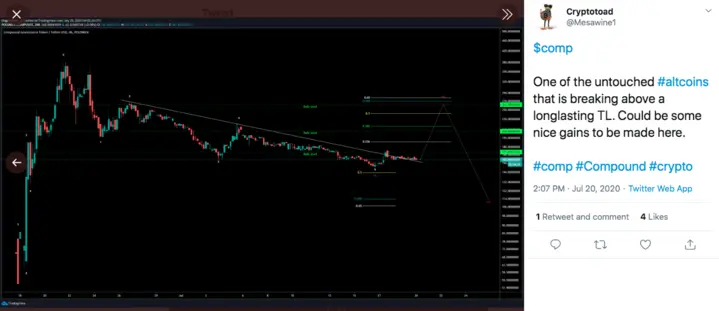
Most of the traders and farmers are in COMP because of the gains it gives them. Trader @Mesawine1 thinks that COMP token is about to add in value yet again, based on its performance.
Where to get COMP tokens?
We have already mentioned the mechanism behind Compound token distribution and the fact that it is traded on the largest exchanges. However, there is a much easier way to get your hands on the token — ChangeHero has recently added it to the list of supported coins. As always, for a small fee we will find the best rate on the market for you, handle the exchange from any asset from the list and deliver COMP safely and swiftly into your wallet.
Which wallet to choose for Compound tokens?
As a ERC-20 token, COMP can be stored either in Ethereum-specialized wallets such as MEW, or in most multi-currency wallets like Trust Wallet or Atomic. Cold storage of COMP is possible with Ledger or Trezor devices, and in Trezor you can exchange Compound tokens with an in-app function powered by ChangeHero.
However, not all wallets support the functions of COMP management yet. Among those that do are Exodus, ZenGo, imToken and Zerion. In Exodus, for example, you can use the Compound protocol to the full extent, and also swap COMP with our service’s help.
What future plans are there for Compound?
The future of the protocol in the new governance model belongs to the community and depends on which proposals they put out and vote for or against. For example, the USDT market was one of the first proposals made and approved by the public vote rather than introduced by the developers.
There are already quite a few partner products that leverage the protocol to provide value for their customers. For instance, such applications include custodial solutions (Coinbase Custody, Anchorage, BitGo), tax accounting (Lumina, CryptoTaxTools, Cointracker, Tokentax) and DeFi products (Dharma, Argent, Linen, Donut).
Summary
Compound protocol and COMP are the DeFi darlings at the moment. The protocol consistently finds use in new applications and creates value, and the Compound token is hot with a new kind of crypto investors who seek to capitalize on risk in ways never seen before. Many DeFi projects follow suit, but Compound has already made a name for itself in this sphere.
If you like learning about all things crypto and blockchain, give us a follow on social media of your choice — we’re on Twitter, Facebook, Reddit and Telegram. Our team regularly posts educational content, news and price predictions on our blog and puts up fun and insightful updates for everyone to enjoy.




